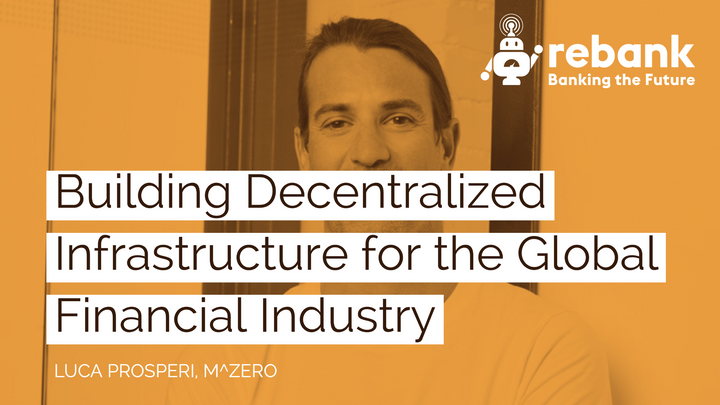A Primer on Open Banking

I’ve been speaking a fair bit on open banking lately, and I want to share my thoughts here, too.
Conceptually, I’m most interested in the way bank business models are changing. I’d go as far as to say we’re witnessing the biggest change in banking in our lifetime – even more impactful than online banking. For centuries, banks have been self-contained institutions, generally preferring not to share products, services and customers. This is changing.
APIs, cloud processing and storage, smarter insights and contextual delivery through data, and other new technological developments are changing business models and customer expectations across industries. Fintech + open banking + competition are finally pushing banks to follow other industries and open up.
Openness, more efficient technology and more direct customer access have resulted in lower costs of doing business and acquiring customers. This dynamic has in turn led to the fragmentation of financial services as niche providers can profitably target single products and customer segments. Traditionally, companies would have had to build extensive bespoke technology and originate customers through costly off-line sales networks, making many niche and low margin offerings unviable.
For the sake of clarity, I define “open banking” as the trend currently underway toward openness in banking technology, product/service delivery and customer ownership. This includes PSD2, the UK’s Open Banking Initiative, other national regulatory changes, as well as strategic/competitive moves by individual organizations to leverage openness to do business better.
Decoupling of Margin and Fees
In the old model, banks held licenses and capital, took deposits, made loans and provided value-added services. Some banks served retail customers, some served businesses and some served other banks.
Modern technology and regulations are bringing competitors to market in financial services, especially on the front end.
Going forward, I think we’ll see two different business models within banking (some organizations may pursue both): backend, utility banking and frontend, customer experience ownership.
Backend banks will carry licenses and capital, access low cost funding through deposits, and process large volumes of payments. They will earn net interest margin by taking deposits and lending. They will also earn fees for providing infrastructure to players higher up the stack.
Frontend “banks” don’t need to hold licenses or significant capital. They don’t need to hold deposits. They’ll focus on providing great customer experience. They’ll own customer relationships. They’ll generate fee revenues by providing value-add services to customers and by originating wholesale business for backend banks.
Specialization
As mentioned above, more efficient technology and easier access to potential customers has led to niche players in a range of financial services subsectors, including payments, FX, lending and more. The same dynamics have led to a rise in new banks for the same reasons. Monzo, Starling, Tandem, Civilised Bank and others are taking advantage of this opportunity. Traditionally, it wouldn’t have been commercially viable to deploy such niche offerings, but it is now.
The newly available financial viability of niche financial services companies and banks results in improved user outcomes, as banks no longer need to offer all products to all customers.
Unbundling & Rebundling
Short term specialization/fragmentation will inevitably lead to consolidation in the medium term. We’re already seeing large strategic investors back growth stage fintech companies. That’s undoubtedly a precursor to more traditional M&A.
It will be interesting to see how consolidation plays out in a sector built on openness. If you can cheaply and easily vertically integrate through APIs, will there be less incentive to acquire up or down the chain?
I discussed the topic of consolidation recently with Philippe Gelis, founder of Kantox, a successful first-wave fintech. He questioned the likelihood of immediate consolidation between fintechs on the rationale that no one is yet mature enough to require anything other than organic growth. While I could see dozens of opportunities for incumbent banks or software vendors to purchase fintechs, I think he’s probably right about fintech-fintech consolidation.
One of fintech’s greatest strengths – specialization – is also one of the industry’s greatest weaknesses when it comes to mass market adoption. Users don’t want a different provider for every financial service they use. Eventually, successful companies will be built that pull niche fintech solutions together in a single place. This will be achieved by pulling various pieces together on the backend and delivering via a single, unified front end. Revolut is starting to do a great job of this.
Examples
It’s easy to talk conceptually about open banking, but tangible examples are required to bring the relevance to life. Here are a few examples of what open banking, in the strictest sense, is doing and will do. I hope to have time to expand on these examples in future posts. In the broader sense, open technology and open platforms are powering the entire fintech movement, in ways too numerous to list.
Retail:
- Budgeting
- Tax prep
- Access to credit by sharing transaction history outside of bank
- Product comparison and switching (within financial services as well as in other sectors)
- Financial management
- Accessing of financial data by non-banks to improve user experience (eg home/car buying)
Business:
- Budgeting/forecasting
- Cash management/improved financial management
- Accounting system integration
- Access to credit
Opportunities for banks:
- Increase lending to non-customers (lend without offering transaction banking)
- Visibility into customer accounts at other institutions (eg HSBC Beta, Yolt, Tandem)
Opportunities for non-banks:
- Initiate payments and access customer financial data on customers’ behalf
- Disintermediate banks in a range of areas
Case Studies:
Deposit Solutions: Helping banks raise more deposits, access cheaper borrowing rates, better manage liquidity
O2 Bank (Fidor Solutions – Telefonica): O2, the telecom provider, launched a banking app for its customers in Germany. O2 bank customers get retail bank accounts with all the functionalities they entail, plus rewards like free mobile data in a twist on loyalty/rewards.
Fidor OS / Wirecard / SolarisBank: Backend banks by design. Providing banking infrastructure, licensing and capital to fintechs, corporates and other banks looking to quickly deploy banking offerings.


